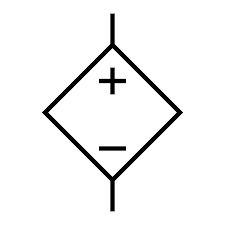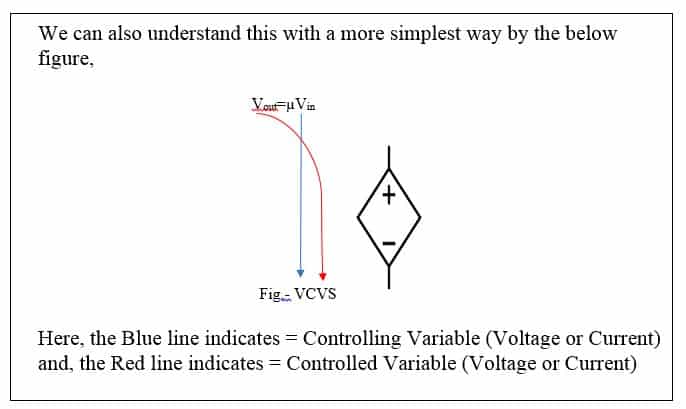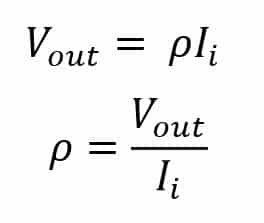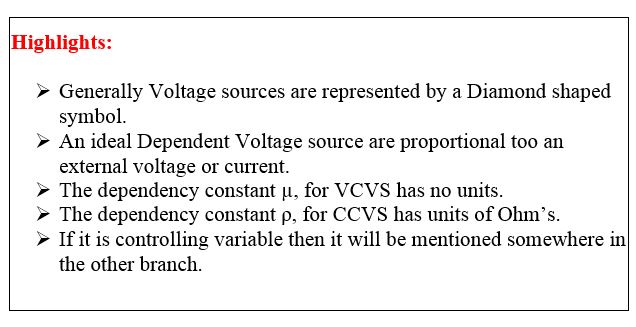The dependent voltage source is a four-terminal device whose output voltage is controlled either by circuit current or voltage. The output voltage is dependent on the input voltage or current flowing in the circuit, and it increases or decreases linearly with an increase/decrease in the input voltage or circuit current. Therefore, the dependent voltage source is also called a controlled voltage source.
The symbol of the dependent voltage source is given below.

An ideal voltage source keeps its output constant regardless of the magnitude of the circuit current. On the contrary, the output voltage of the dependent voltage source depends on the magnitude of the circuit current. Thus, the output voltage of the dependent or controlled voltage source can not remain constant.
Types of Dependent Voltage Source
The output voltage of the source depends on the magnitude of the current and the input voltage. Based on this, the dependent voltage source can be further classified into two categories.
- Voltage-controlled voltage source(VCVS)
- Current controlled voltage source(CCVS)
The voltage source whose output depends on the input voltage is called the voltage-controlled voltage source(VCVS).
A voltage source whose output depends on the current flowing in the circuit is called a current-controlled voltage source(CCVS).
Voltage Controlled
The output voltage of the dependent voltage source is scalar multiples of the input voltage. If the input voltage is 5 volts, the output voltage can not be equal to the input voltage, and the output voltage is equal to the input voltage multiplied by a constant. A multiplying constant is called the dependency factor or scaling factor of the dependent voltage source.


The output voltage Vout of the dependent voltage source is dependent on the input voltage Vin. The output voltage Vout is μ times the input voltage Vin. Here, μ is the constant known as the dependency factor or the scaling factor.

Thus, the dependency factor μ is a dimensionless quantity. The example of VCVS is an ideal transformer. The output voltage V2 linearly increases or decreases with the increase or decrease of the voltage V1 at the primary side of the transformer. This happens because the voltage drop does not take place in an ideal transformer. The secondary voltage V2 is function of the primary voltage V1, and the magnitude of the secondary voltage depends on the voltage transformation ratio of the transformer.
Using the transformation ratio,

In an ideal transformer, the secondary voltage has a linear relationship with the input voltage. An ideal transformer is thus an example of the dependent voltage source.
Current Controlled
The magnitude of the input voltage depends on the multiplying constant times the controlling current input generated elsewhere within the connected circuit. This dependency of the output voltage on the value of the input current makes it a dependent current source, and this is the reason the voltage source is called a current-controlled voltage source(CCVS).


It can be seen from the above diagram that the output voltage of CCVS has a linear relationship with the input current. The current Ii determines the magnitude of the output voltage. The output voltage Vout is equal to the product of the input current Ii and dependency constant ρ. Thus, the output voltage Vout is equal to:

The unit of the dependency constant is Ohm(Ω).

I appreciate sending me subjects related in electrical power engineering.